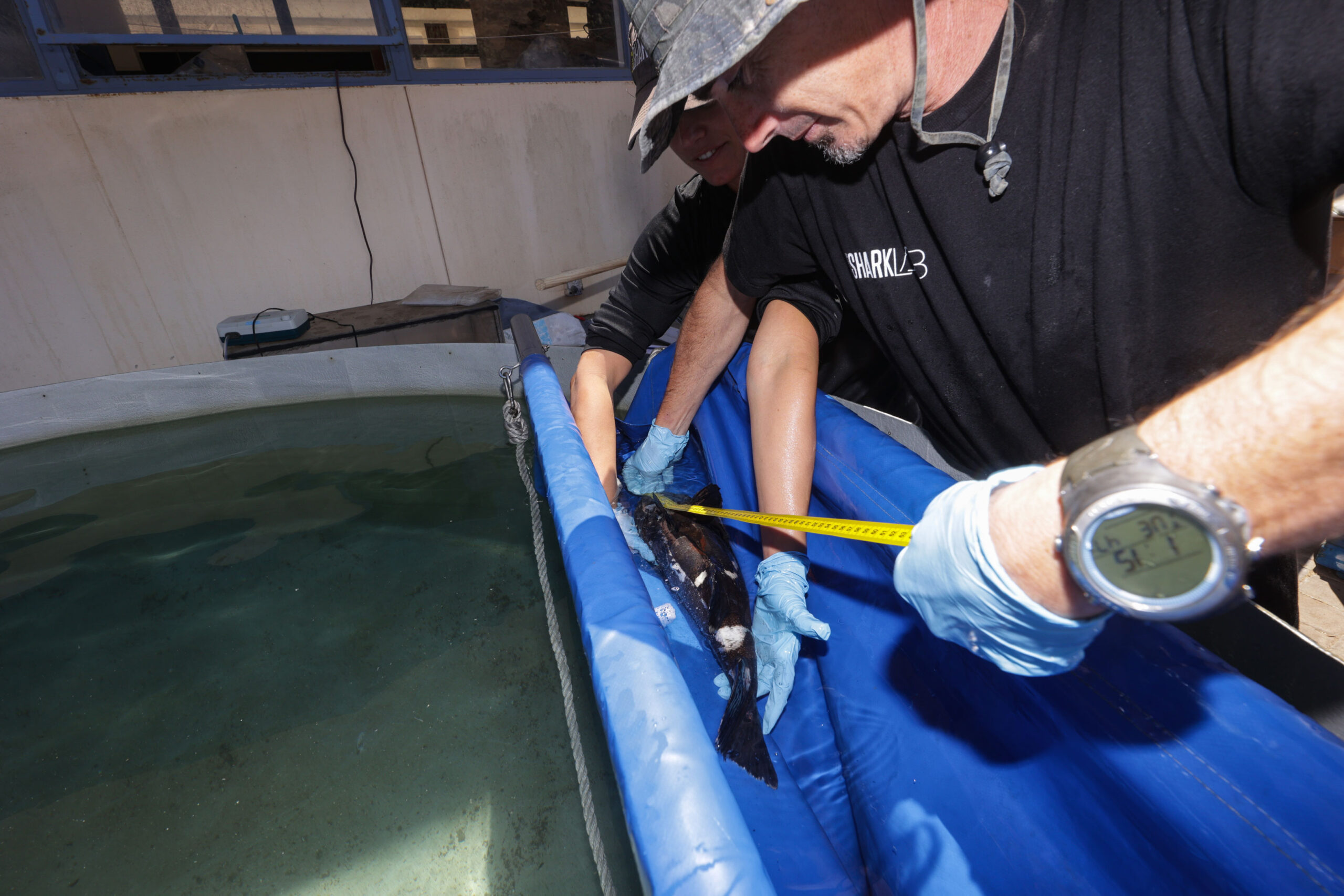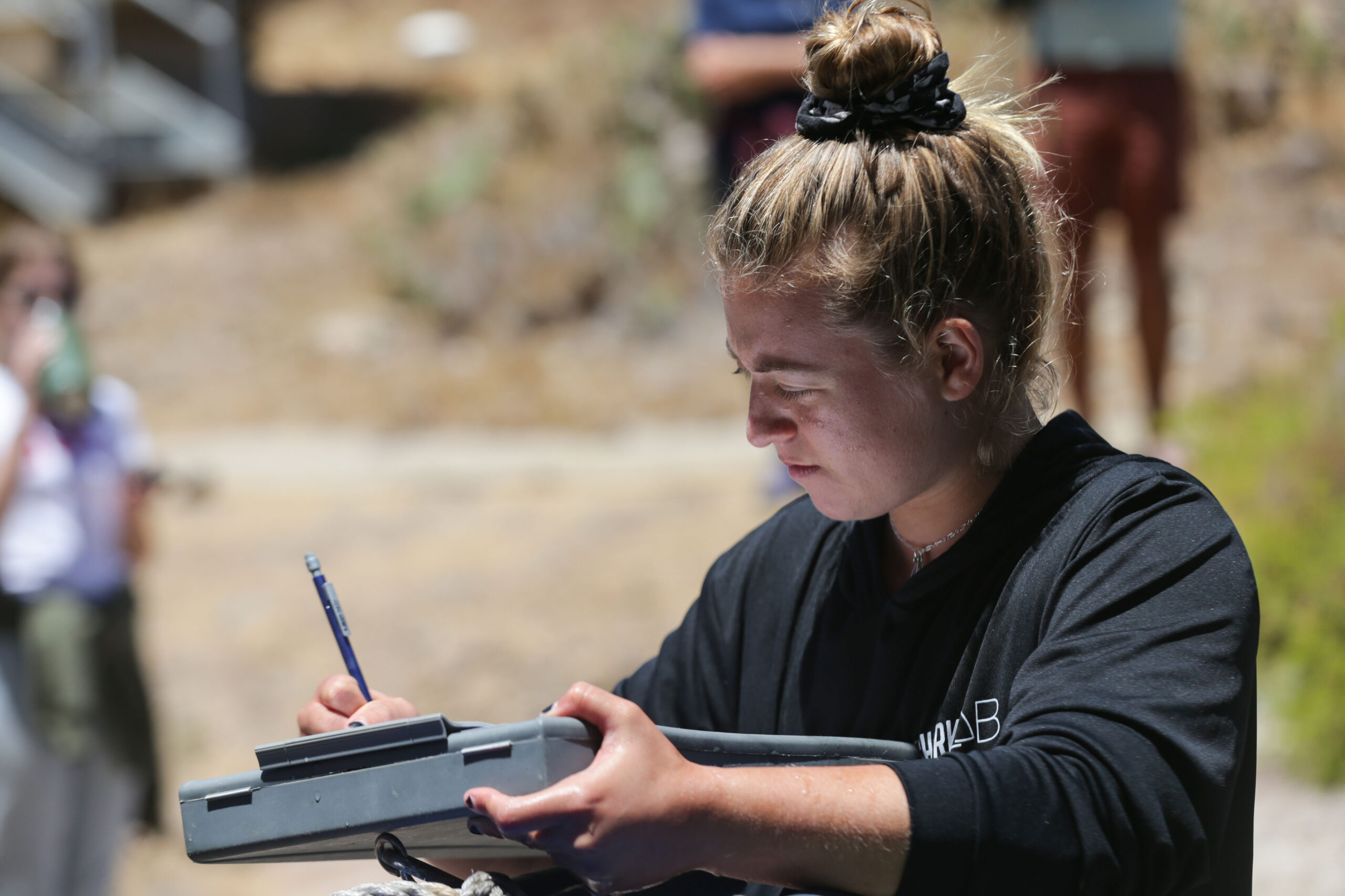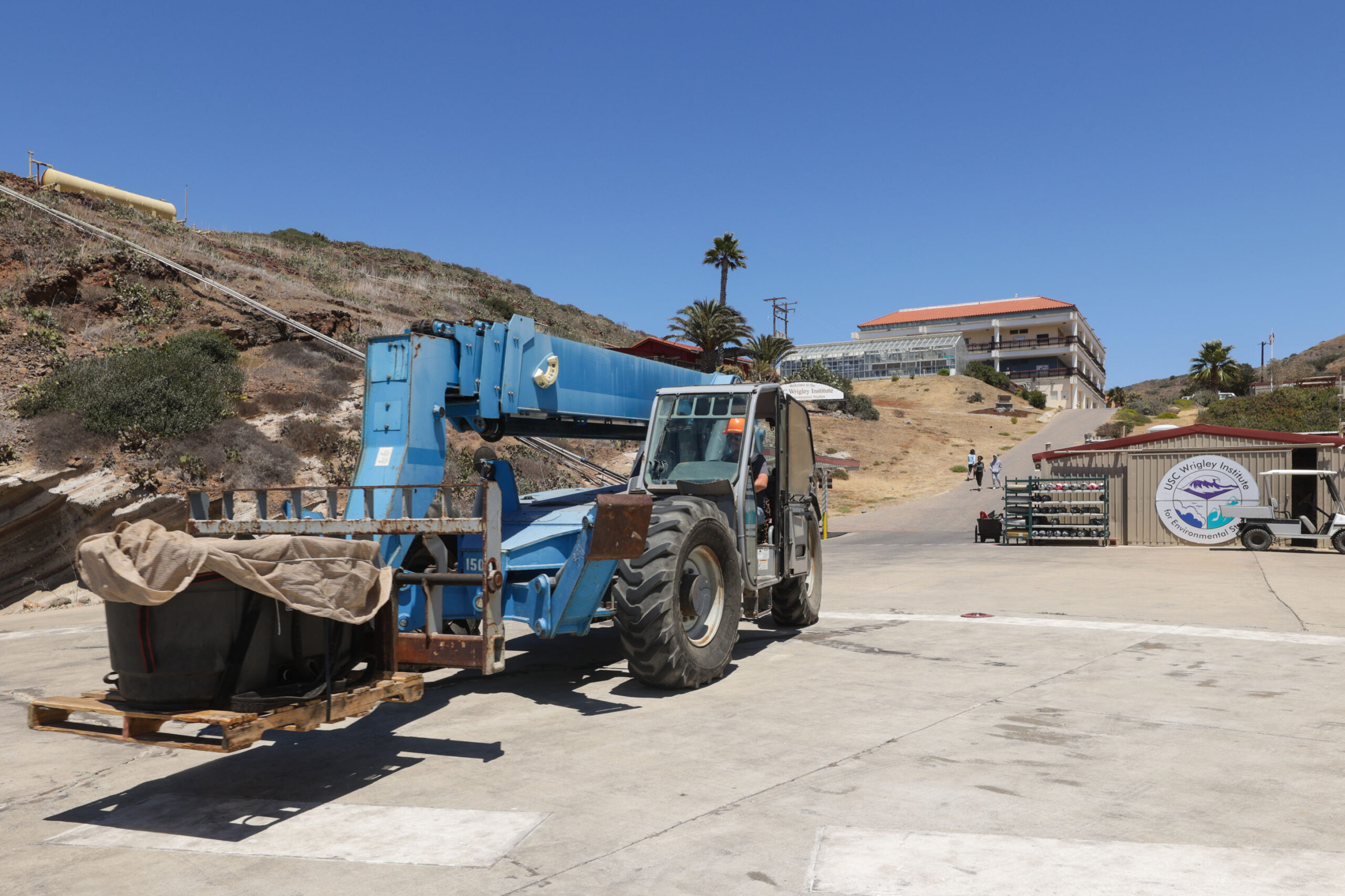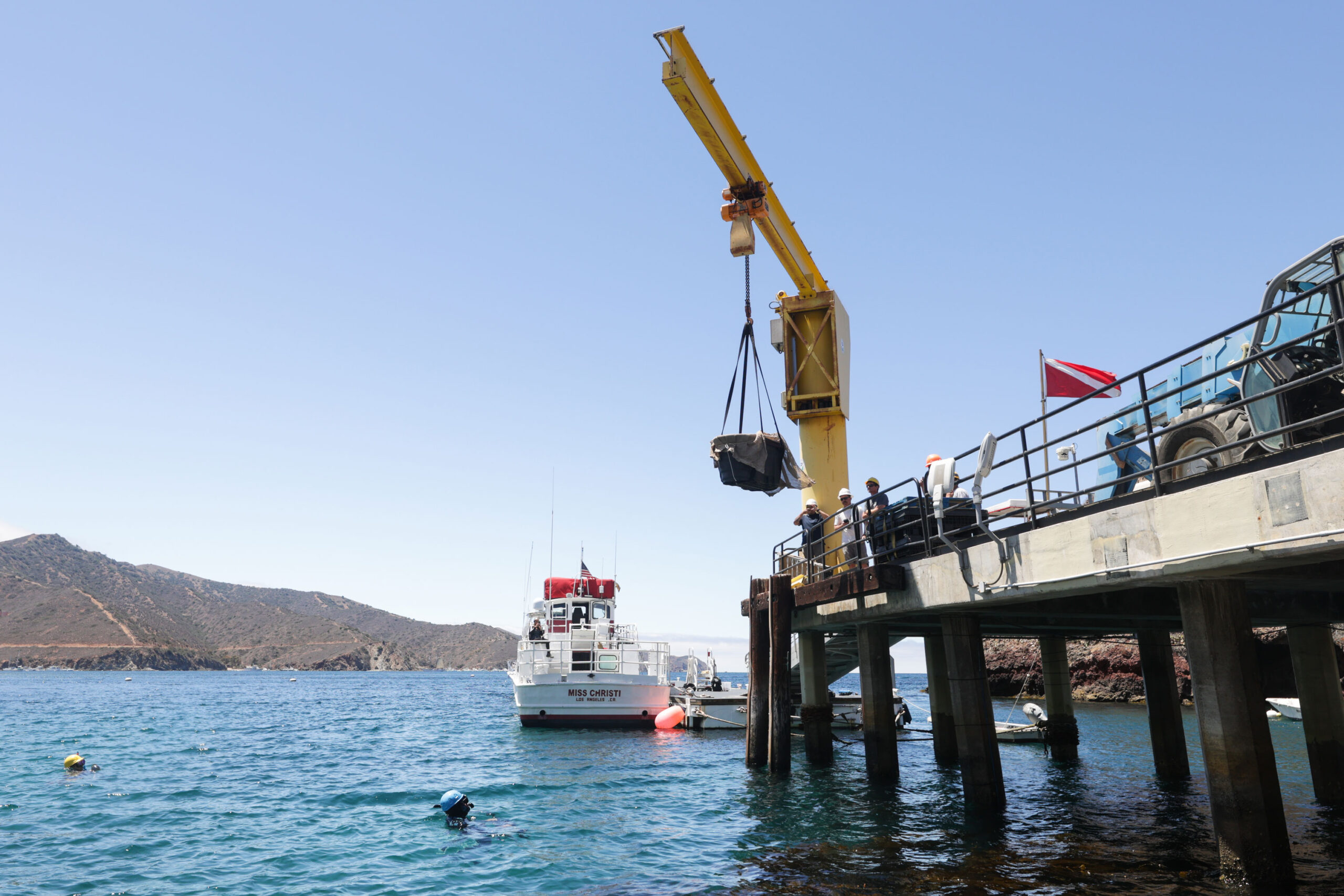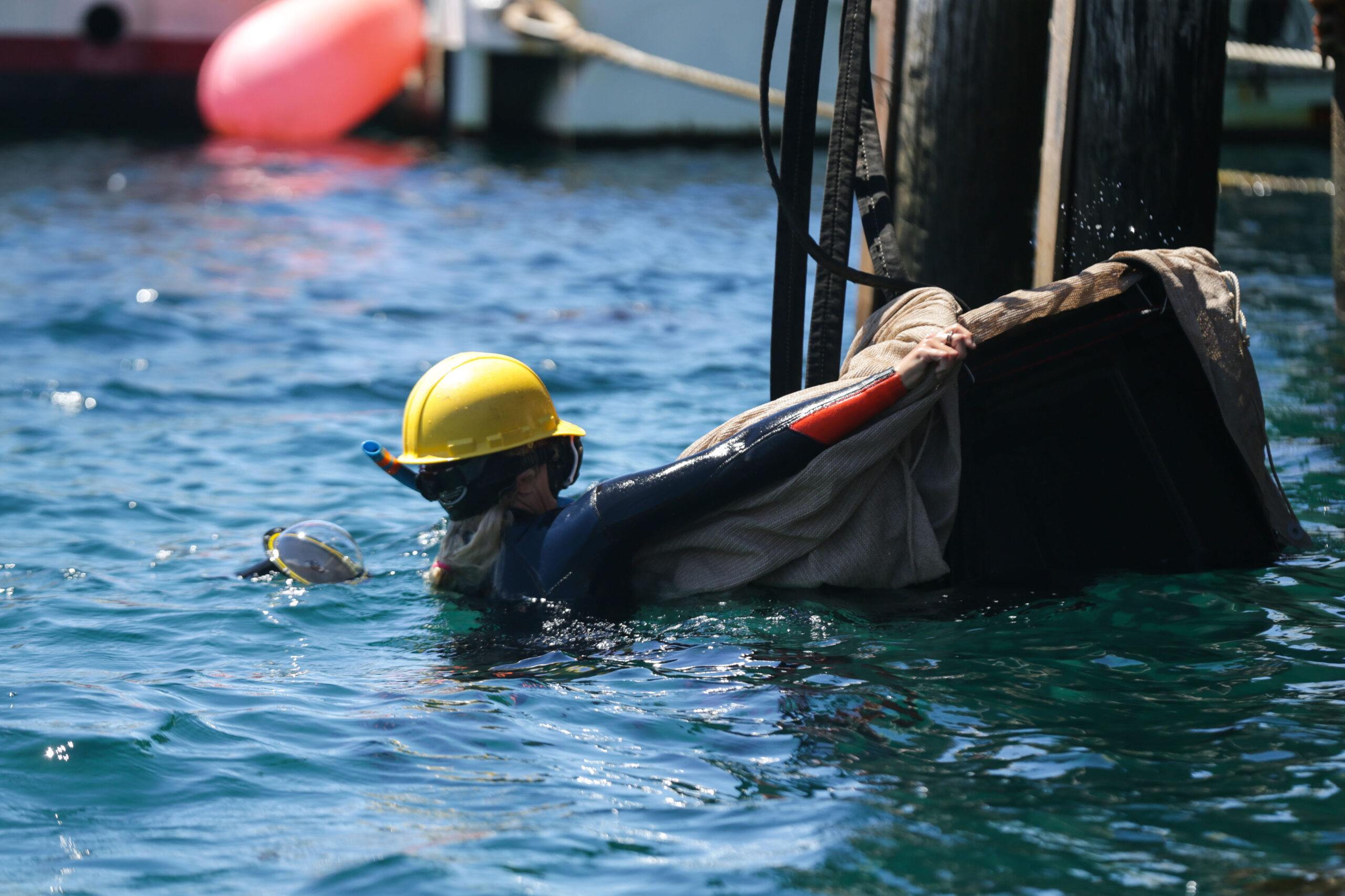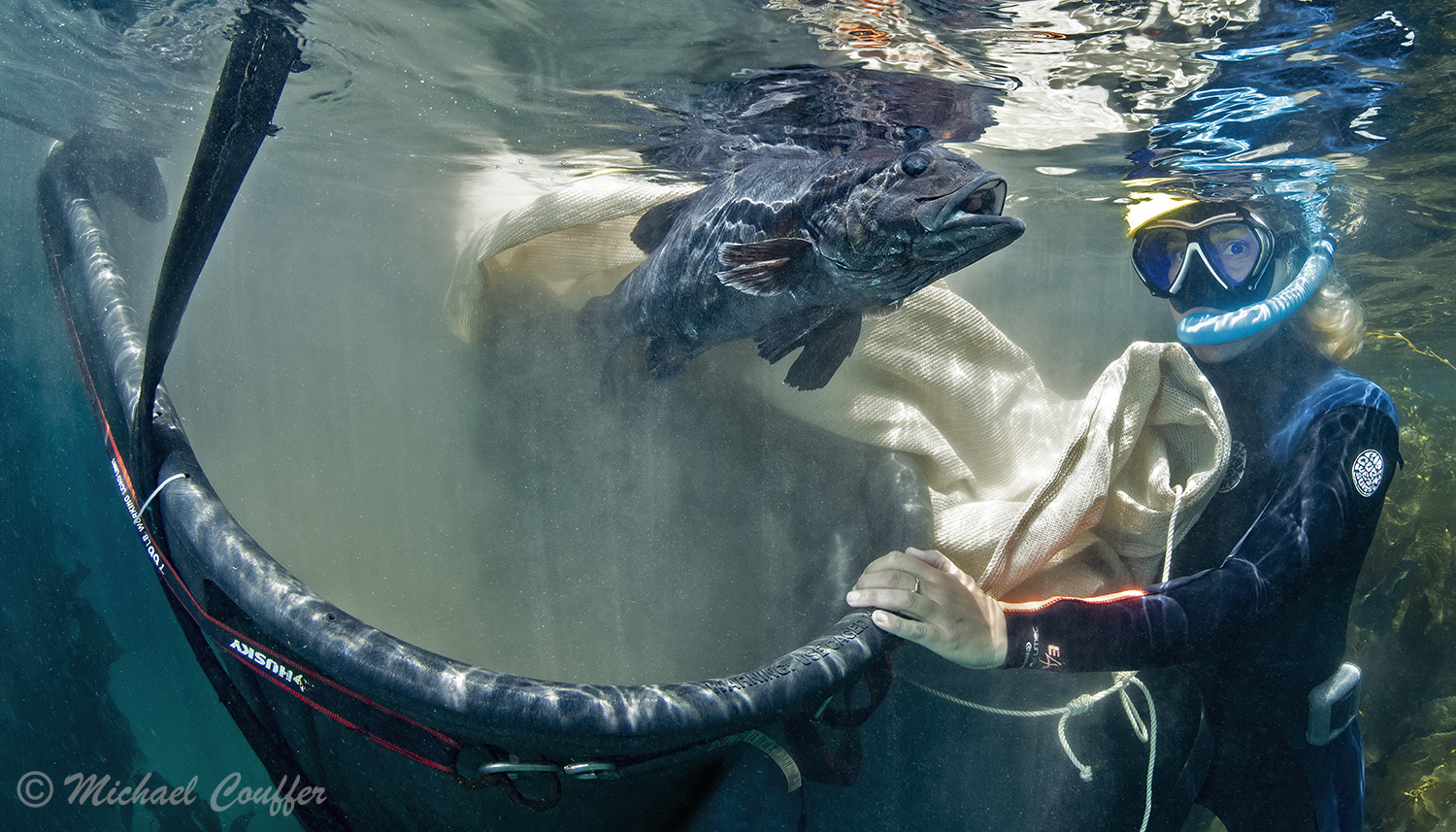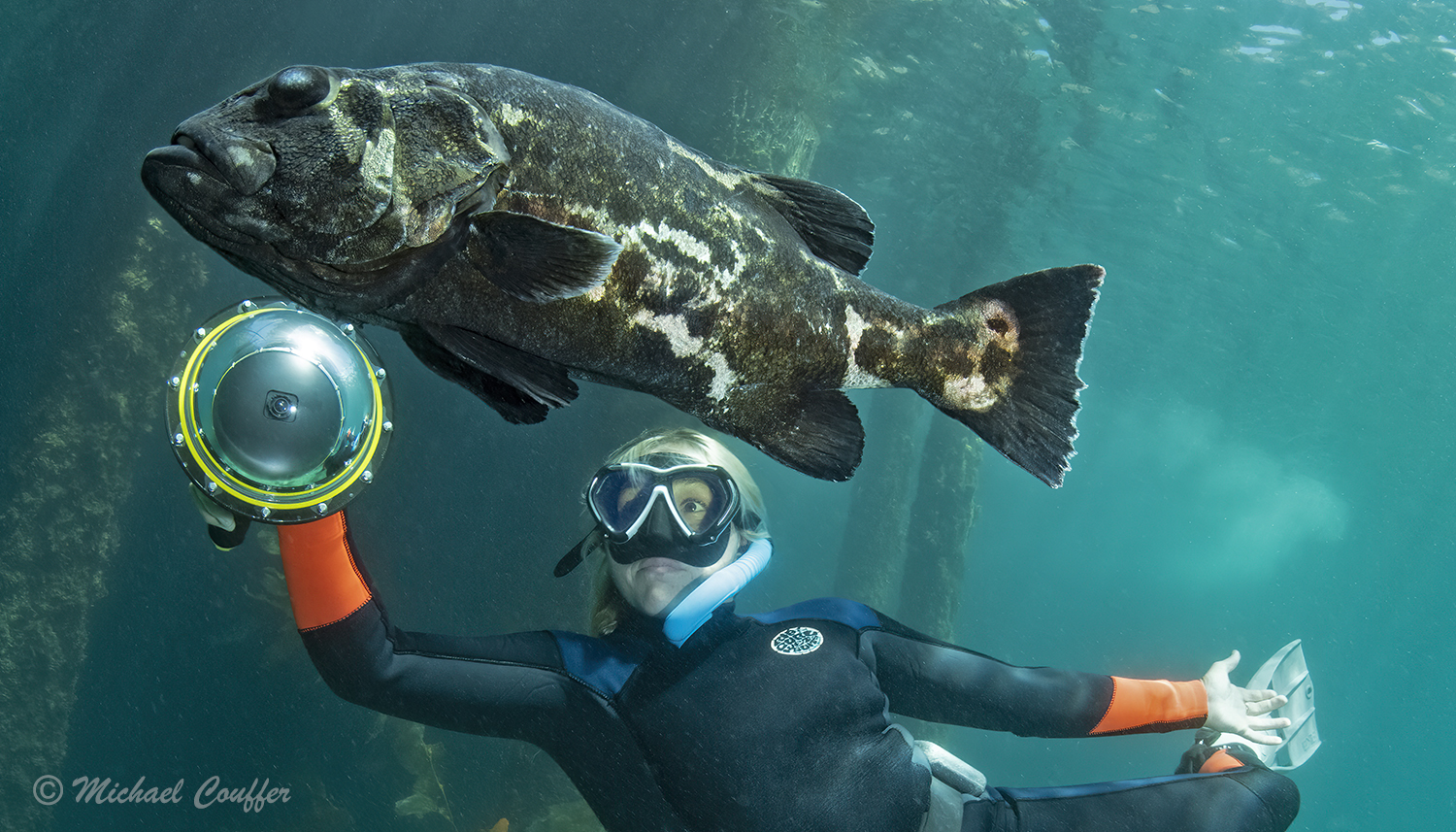Raising Giants
On a sunny day this summer, a small but excited crowd gathered at the Wrigley Marine Science Center (WMSC), the USC Wrigley Institute for Environmental Studies’ satellite campus on Santa Catalina Island. It was release day. After more than two years of carefully raising three giant sea bass at WMSC, Research Laboratory Technician Victoria Sperow was getting ready to say goodbye to her charges.
Sperow took responsibility for the bass in March 2020 and carefully tended them for more than two years as part of a partnership with California State University Northridge (CSUN), the Cabrillo Marine Aquarium (CMA) in San Pedro, and California State University Long Beach (CSULB). Together, the four organizations are aiding efforts to restore an apex predator to the kelp forests of Southern California’s San Pedro Channel.
Fished almost to extinction in the 1970s, giant sea bass slowly began to rise in numbers after the state of California banned their intentional catch in 1981. The establishment of a network of Marine Protected Areas–including Catalina’s Big Fisherman Cove, where WMSC is located–also helped. The giant fish are still critically endangered, however, and in dire need of continued conservation and support.
“Since giant sea bass are endangered and they visit our cove a lot, we thought raising these individuals was a good opportunity to teach students about the species,” Sperow says of the fish that were released this summer. “It was cool to be able to show people these animals that can get up to 500 pounds and live up to 70 years.”
The giant sea bass came to WMSC as the result of what was essentially a happy accident. In 2019, CSUN ichthyologist Dr. Larry Allen collected three live specimens for his groundbreaking research on the noises sea bass make underwater. When hundreds of thousands of eggs suddenly appeared in the tank where he was keeping the fish, he realized he had collected a male and two females. CMA took many of the eggs, hatched them, and ended up with about 1,000 viable juveniles. They released several hundred into the wild for a large-scale tracking study but still had more individuals than they could handle. CMA and the Wrigley Institute are longtime collaborators, having worked together on a variety of research projects. So when the aquarium went looking for a home for some of the surplus fish, WMSC was a logical choice.
“We wanted to release as many of the fish as possible for conservation purposes, but we also knew there was critical work being done by our partners. Reaching out to the Wrigley Institute was an easy decision. We wanted to make sure the bass went to a good home,” says Jose Bacallao, CMA’s exhibit director.
Sperow eagerly volunteered to be their caretaker. A lifelong snorkeler who grew up near San Francisco, she’s been interested in marine biology since childhood and got her undergraduate degree in the subject at Humboldt State University. She had animal care experience from previous work at Camp Emerald Bay’s Pennington Marine Science Center and San Francisco’s Aquarium of the Bay, but the giant sea bass were a new and exciting challenge. Few aquarists or veterinarians have crossed paths with these fish, especially at the juvenile stage, so information on their care can be difficult to find.
“I did a lot of reaching out to people at other institutions, especially at Aquarium of the Pacific and Cabrillo, and we had a lot of support from [USC veterinarian] Dr. Brad Ahrens. People were so nice and happy to help. That was really good and gave me a lot of hope,” Sperow says.

The juveniles were initially so small that she had to develop special food for them, but they grew quickly and soon moved to WMSC’s education tanks. Though many divers and researchers know about giant sea bass, Sperow says, few have actually seen one up close or know what a juvenile looks like. Having the fish at WMSC provided a unique opportunity to teach visiting undergraduate students not only about the individuals in the tanks, but also about biodiversity, the species’ broader role in the ecosystem, and the damage caused by overfishing.
By keeping the fish at WMSC for a full two years, the Wrigley Institute was able to help increase their odds of survival in the wild. They grew to a size that puts them beyond the reach of all but the largest predators, which means they’ll be more likely to reach breeding age. With a longer lifespan, the fish will also be more useful to researchers. They were tagged prior to release, and CSULB’s Shark Lab, led by Dr. Chris Lowe, will track the individuals over time to learn about their migration patterns, preferred habitats, how deep they swim, and more. In addition, their spot patterns (which are unique, like fingerprints) were recorded for the University of California Santa Barbara’s Spotting Giant Sea Bass project.
“It was really cool to have such a big team working on the release, CSULB being there, and the Wrigley Institute facilities team helping us move the fish,” Sperow says. “It was interesting to see how they reacted once they were in the water. The first one we released actually left but then came back around by the time we released the third one. They were really strong swimmers–they didn’t just sit there.”
(The video below, shot by Sperow, shows an interaction between one of the newly released giant sea bass and a curious kelp bass who decided to check out the newcomer. The diver is Mike Couffer, a conservation photographer who captured the underwater portion of the release. Wrigley Institute environmental communications intern Yannick Peterhans, a USC Annenberg journalism student, captured topside images.)
CSUN’s Larry Allen, who has been studying large fish in Southern California for decades, says persistence will be key to the success of conservation efforts like this one. Though giant sea bass numbers have increased, he estimates that the population is still only at about 20 percent of where it should be for long-term survival. He has sympathy for fishers who are starting to see giants in the water and wondering why they can’t start catching the profitable fish again. However, he believes the current ban needs to stay in place for at least another 20-30 years to avoid a repeat of the mid-20th-century disaster. Giant sea bass can take 11-13 years to reach sexual maturity, so their numbers don’t rebound rapidly.
“Fishers are just trying to make a living, but it’s conceivable that just a couple of sport boats could wipe out Southern California’s entire giant sea bass population as it stands right now. You don’t want to fish things out–you want to be able to keep catching them into the future,” Allen says.
For the Cabrillo Aquarium’s Jose Bacallao, this project has a less tangible value.
“I am profoundly proud of what we and our partners have done here. There’s this human story to be told about how we all supported each other to be successful,” he says. “And then to show people this incredible animal–it demonstrates to the community that there is hope and opportunity to repair and restore our local environments. It’s a story that could be told for the rest of our lives.”


